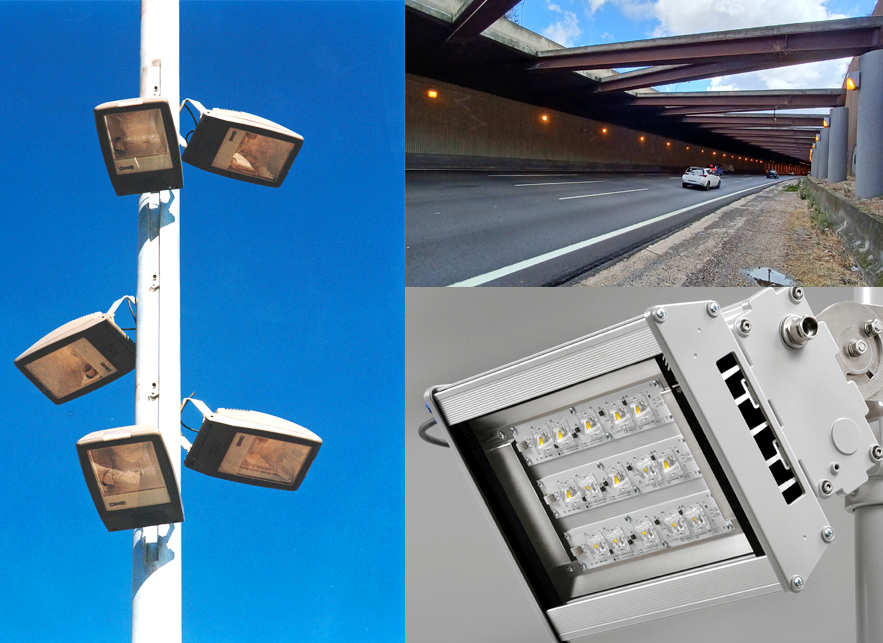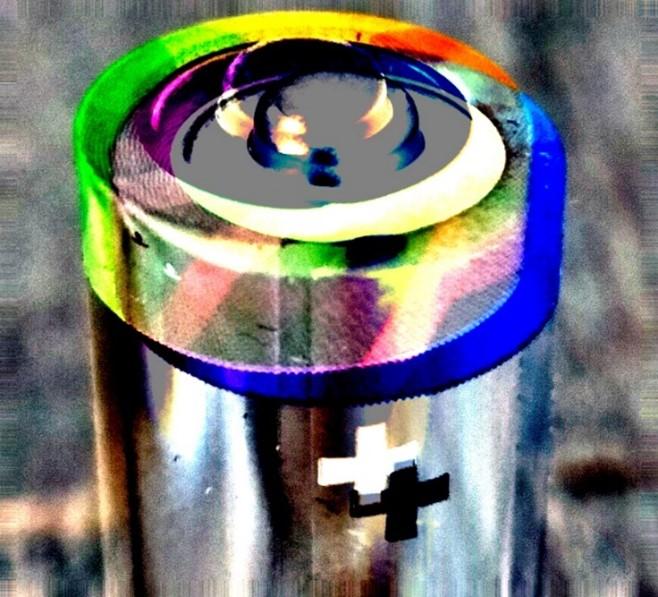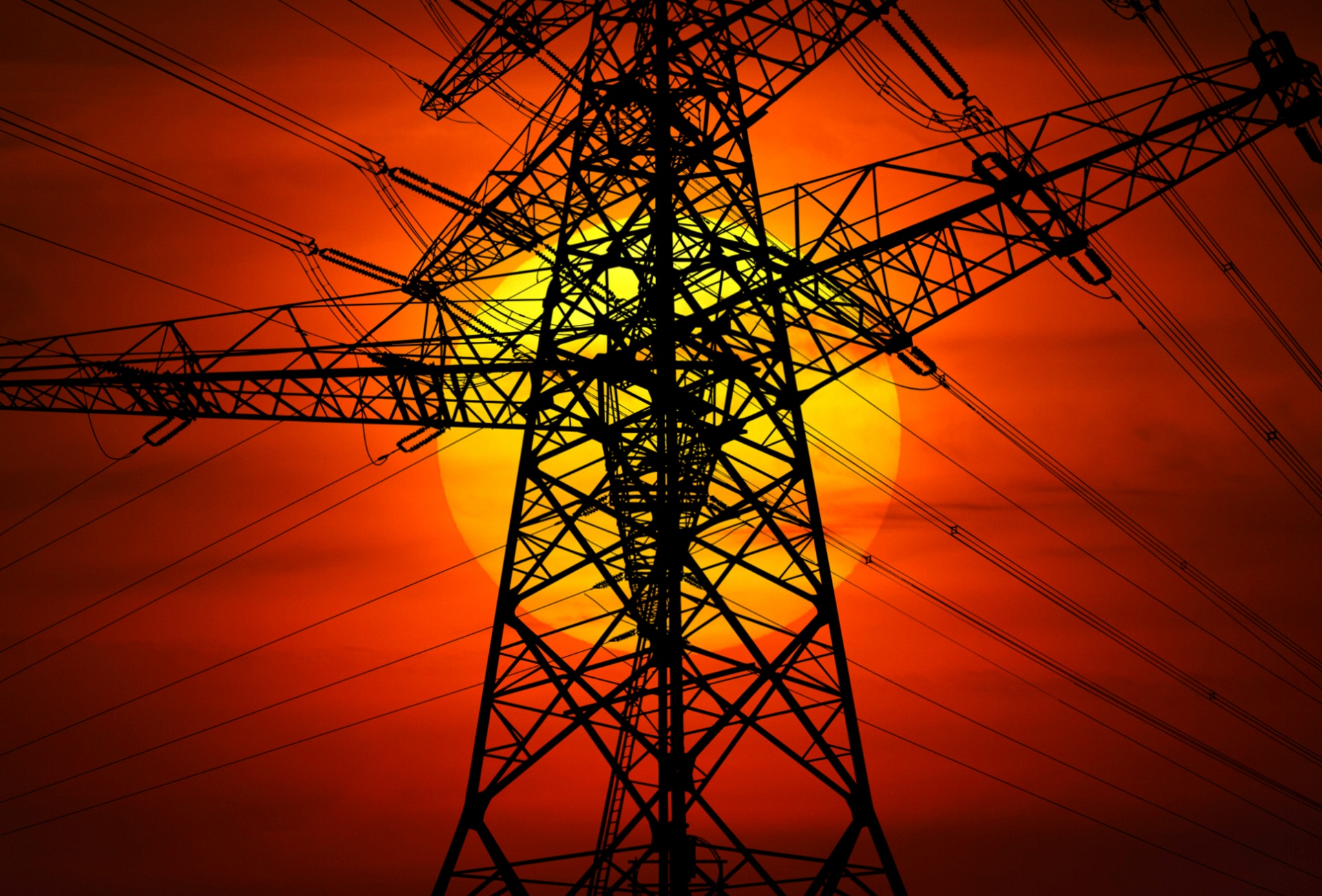
01
Our planet can't wait
The fight against climate change requires an urgent increase in energy efficiency: in other words, achieving the same (or more) goods or services with the least possible consumption, and therefore fewer emissions. Ineco is working to make the different transport systems and infrastructure (from railways to air transport), and buildings increasingly eco-efficient. These are, in addition to industry, the sectors that consume the most energy. Digitalisation also offers many possibilities for optimising energy use.
02
Energy is neither created nor destroyed ... but it can be saved
Economy and society are driven by energy, but it is a movement that is literally choking the planet: energy production and consumption, both at European level and in Spain, are responsible for 75% of greenhouse gas (GHG) emissions, the main cause of global warming over the last 250 years.
In terms of energy consumption, transport accounts for 40% of total, buildings for 30% and industry for the remaining 25%. Although progress has been made in recent decades, tackling the climate emergency is urgent and cannot be postponed.
That is why EU Member States have smoved up a gear in recent years by raising their emission reduction targets - (from 40% to 55% by 2030, as part of a package of actions called "Fot for 55") - making them binding by law and backing them up with unprecedented funding. Thus, 30% of the European budget and NextGenerationEU funds for the post-pandemic recovery plan will be allocated to climate action, in order to reach the goal of "zero emissions" by 2050.
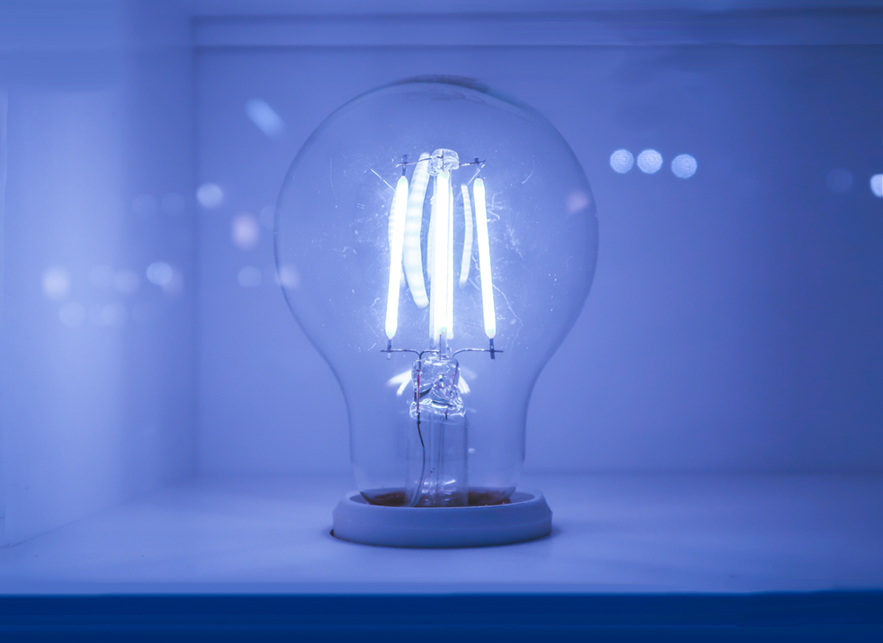
"How energy savings can contribute to achieving climate neutrality (...) means less greenhouse gas emissions, less pollution, more affordable energy for citizens" Council of Europe, July 2021
In this context, energy efficiency has been incorporated into European and Spanish legislation as a fundamental pillar in the fight against climate change. This is particularly true in the fields of transport and building, where Ineco is active, as well as in digitalisation.
The company has multidisciplinary teams of professionals from various fields - engineering, architecture, environmental sciences, ICT, economics and many others - who carry out specific work related to energy efficiency and transition for all modes of transport and buildings: projects for photovoltaic installations and replacement of conventional lighting with LEDs, development of efficiency and savings plans for transport operators and managers, energy audits and certifications of infrastructures and buildings, or design of airspace and flight paths that save fuel, among others.
"Digital technologies will make energy systems more connected, smarter, more efficient, more reliable and more sustainable in the coming decades" European Commission, October 2022
New technologies and digitalisation also provide very useful tools to improve energy efficiency, both in transport and in buildings: "smart" lighting or air conditioning systems, such as those being tested for Adif in the Smart Station pilot project at the María Zambrano station in Malaga, or those to be installed in more than 200 tunnels on state roads; the use of digital models of buildings and infrastructures to manage, measure and accurately represent energy consumption, among many other applications.

The European Commission points out that the digitisation of supply networks and energy systems is inextricably linked to the increase in cyber threats, particularly those directed at transport, a strategic sector. Ineco also has a multidisciplinary team of experts in railway and aeronautical cybersecurity.
In the field of smart cities, the company has developed innovation projects that include energy efficiency measures in public spaces - lighting, air conditioning, irrigation, etc. - such as the Cityneco urban services management platform or the Master Plan for the smart campus of the University of Almeria.
In the field of smart cities, the company has developed innovation projects that include energy efficiency measures in public spaces - lighting, air conditioning, irrigation, etc. - such as the Cityneco urban services management platform or the Master Plan for the smart campus of the University of Almeria.
03
Efficiency, savings, energy transition... what are we talking about?

Photo credit: Ineco/L.Amigo
The European Union distinguishes between the different but closely related concepts of energy efficiency and energy savings: efficiency is the "ratio of output of performance, service, goods or energy, to input of energy", a ratio that can be improved by "technological, behavioural and/or economic changes" (Directive 2012/27/EU). Energy savings, on the other hand, is "an amount of energy saved, determined by measuring and/or estimating consumption before and after the implementation of animprovement measure".
For the International Energy Agency (IEA), an autonomous international body founded in 1974 in the wake of the oil crisis, energy efficiency is "using less energy in providing the same service". In other words: saving energy is the result of improving efficiency in its production, distribution and consumption.
"The cheapest and cleanest energy is the energy we don't use" European Commission, July 2021
This aspect is so relevant that energy efficiency is considered an energy source in itself: the IEA, as well as the European Commission and other public and private entities agree on this consideration, and estimate that up to 40% of the energy that will be used in the future will be the result of efficiency and saving actions. According to the Council of Europe, in the last 15 years "almost one third of energy has been saved compared to the 2007 consumption projections for 2030" thanks to the implementation energy efficiency measures.
But it is not just a matter of using less energy without affecting social and economic development; it must also come from "clean" and renewable sources in order to achieve the Net Zeo Emissions by 2050 Scenario.
And as an intermediate target, at least 55% by 2030, compared to 1990 levels, as stated in the European Green Deal. Hence, the concepts of "efficiency" and "energy transition" (understood as the progressive replacement of fossil energy sources with renewable energy sources) are often closely linked.
Since the United Nations Climate Summit in 2015, which concluded with the signing of the Paris Agreement, finalised in 2019 with the Green Climate Pact, the Unio's has been developing legislation (Climate Law 2021) and raising its ambiotion osn reducing greenhouse gas emissions ('Fit for 55' package), making them binding and updating its strategies and directives.
Thus, in June 2022, European energy ministers agreed to raise the targets for increasing energy efficiency by 2030 from 32% to 36% (in final energy consumption) and from 32% to 40% of renewable energy in the energy mix. Currently the European average for renewable energies is over 20%, with large variations between countries, from 60% in Sweden to 11% in Malta, with Spain in the middle of the table, above 20%. For the transport sector, it was agreed to give Member States a choice between reducing GHG intensity by 13% or reaching at least 29% of renewable energy in the sector's final consumption.
This is the legislative framework to which the Member States must conform, transposing - that is, incorporating into their legal system, as Spain has done with Law 7/2021, of 20 May, or the "Climate Law" - the European directives.
04
Railways: the spark of the tracks
Since its origins more than 50 years ago, Ineco has worked on the development and modernisation of the railway in Spain, which in itself represents an important contribution to the mode of transport considered to be the most sustainable.
The company has been collaborating for years with the administrator Adif and the operator Renfe in the design and execution of their joint plan to combat climate change, which is structured around four main lines of action: energy management and efficiency, decarbonisation and awareness-raising.
Abroad, it is assessing compliance with the technical criteria for the protection of infrastructure against climate change, published by the European Commission in July 2021, in the new Rail Baltica rail corridor, which will connect Estonia, Latvia and Lithuania at high speed.
On a national level, in relation to energy, Ineco collaborates with Adif and Adif AV - for which it has also carried out energy audits - in its commitment to self-consumption. Thus, as part of the railway administrator's Self-consumption Plan, it is designing, installing and processing the commissioning of a large photovoltaic plant in the municipality of Miraflores de la Sierra (Madrid). Located at the southern mouth of the Guadarrama tunnel, it will occupy 210,000 m2 and with its 15 MW of installed power, it will serve the tunnel itself and the rest of the production (an estimated 90%) will be fed into the grid. The Miraflores plant will be the star of the Plan, but not the only one: Ineco is working on two other smaller plants at other points on the network. In addition, Adif is planning another 45 photovoltaic installations on the roofs of buildings and stations throughout Spain, which will have a total power of 23 MW.
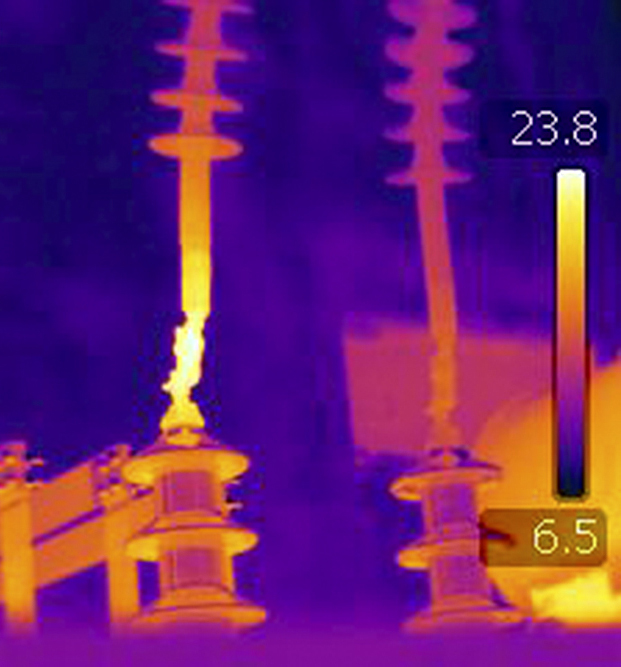
Since 2010, another relevant work of the company for the railway administrator is the design and installation in traction substations of equipment capable of capturing the electrical energy generated by the transformation of the train's kinetic energy during braking and returning it to the grid, to prevent it from being lost. The first of these came into service in 2014 at the La Comba substation on the Fuengirola-Málaga line, and has already returned just over 1 GWh/year to the grid, equivalent to 12.50% of the line's annual energy consumption and an annual reduction of around 230 tonnes of CO2.
Ineco has also worked on another 12 installations of this type, of great technical complexity, spread throughout Spain, with which a total of 18.5 GWh/year of energy savings is expected, equivalent to a reduction of around 4,300 tonnes/year of CO2. In 2022, the substations in Getafe, Alcorcón, Alcalá de Henares, Pinto, Leganés and Tres Cantos (Madrid), Olabeaga (Vizcaya), Guarnizo (Cantabria), and Martorell, Arenys del Mar Granollers and Castellbisbal (Barcelona) were brought into operation. The company has also managed the application and justification of subsidies for these projects.
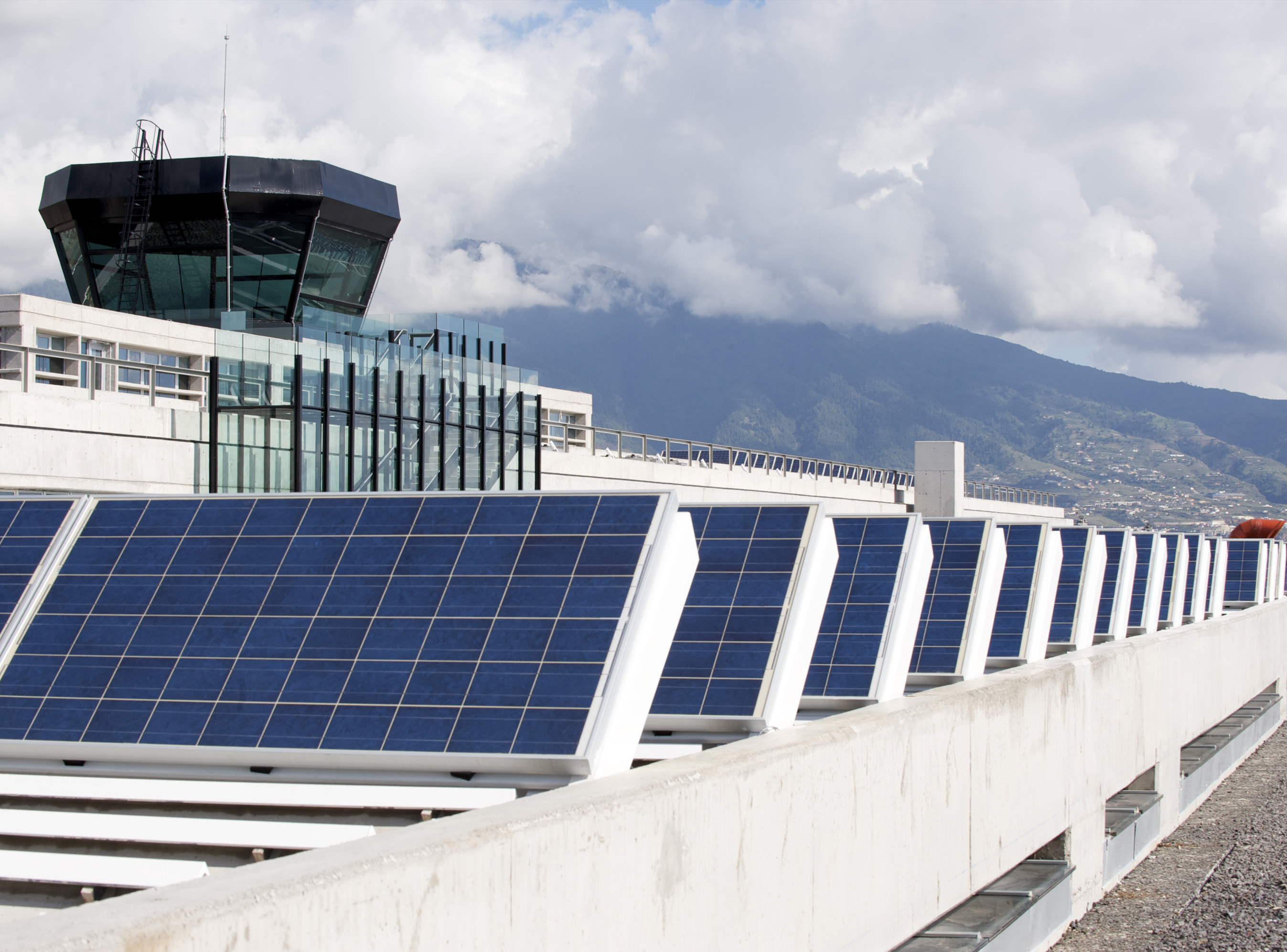
05
Air transport: efficient in the sky... and on the ground
In the airport and aeronautical sector, Ineco also collaborates with the navigation service provider ENAIRE and the airport operator Aena to improve the energy efficiency of the airport network, control centers and air navigation facilities (radio aids, etc.). It also carries out energy audits, various environmental studies (carbon and water footprints, emissions, energy savings, analysis of risks and impacts of climate change, etc.), and technical telemetry work (development of measurement and recording of energy consumption of different facilities).
The company also supports ENAIRE and Aena in the preparation of their strategies and plans for energy efficiency and the fight against climate change, which include, among other actions, programmes for the implementation of renewable energies, fleets of sustainable airport vehicles and improving the efficiency of aircraft operations, both in flight and on the ground.
With regard to airspace, and within the European framework of the SESAR ("single sky") programme, Ineco supports ENAIRE in State projects aimed at optimising the use and structure of Spanish airspace, such as HISPAFRA (implementation in Spain of free routing airspace, which makes trajectories more flexible to reduce congestion and save fuel and emissions) or the National PBN Plan (performance-based navigation, instead of radio aids and physical equipment). It is also worth mentioning the support provided to the Directorate General of Civil Aviation in the process of drafting the Airport Regulation Document 2022-2026 (In spanish, DORA 2), which for the first time includes six environmental indicators to measure the performance of Spanish airports in this area (emissions, waste, etc.), including one on energy efficiency.
In terms of work abroad, it is worth highlighting the project management services (comprehensive project management) that Ineco has been providing since 2020 for the expansion of Kuwait International Airport. At the proposal of the Kuwaiti Ministry of Public Works, one of the requirements of the project is to obtain LEED Gold environmental certification for its new passenger terminal, which recognises sustainability in design and construction.
In terms of energy efficiency, savings have been made in air conditioning and artificial lighting, maximising natural lighting, and through the design of façades and roofs with double thermal insulation up to 25 cm thick and the self-generation of at least 23% of the energy consumed by the building through the more than 80,000 solar panels installed on its roof, the largest airport photovoltaic installation to date. Overall, the aim is for the terminal to consume 42% less energy than a reference building, and the equivalent carbon emissions are reduced to 24%, considering the purchase of green or renewable electricity for 35% of the energy for two years.
Ineco has also drafted a Sustainability Plan for Dammam airport in Saudi Arabia (2019), which, among other measures, proposed the measurement of energy consumption with the individualised installation of meters as a measure to improve efficiency.
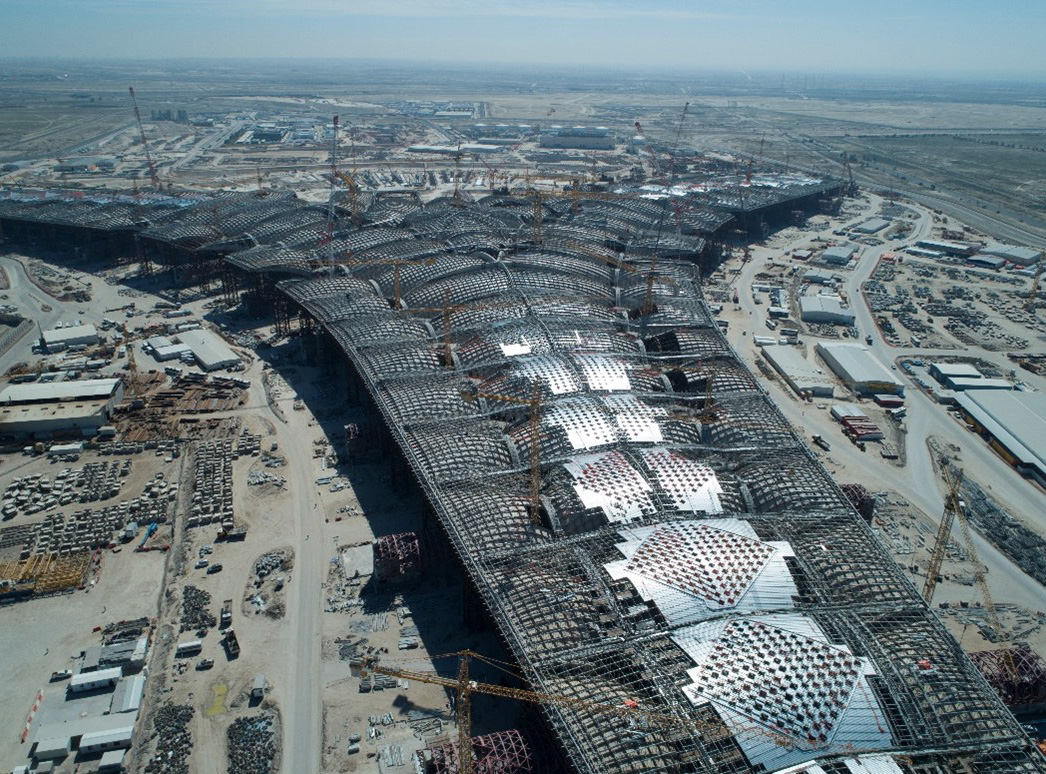
06
Buildings: Target, near-zero consumption
According to European Union data, buildings consume 40 % of the energy generated in their territory (mainly in air conditioning and lighting) and generate around 36 % of energy-related emissions. The aim is to ensure that all new buildings and, as far as possible, existing buildings are considered to be "Nearly Zero Energy Consumption Buildings" or NCEB. In other words, their energy consumption should be very low and, in addition, it should come from renewable sources.
In 2019, Spain amended the Technical Building Code (the basic regulatory framework) to transpose Directive 2010/31/EU on the energy performance of buildings, contained in the Basic Document on Energy Saving (DB HE). Among the main new features, the requirement for the use of renewable energies and electricity generation is strengthened and increased, a new method for calculating energy consumption is adopted and new requirements are introduced in terms of enclosures and architectural design.
Ineco has a team of more than 140 professionals in this field, who work on the improvement and energy certification of buildings linked to the transport sector and the public sector, as well as their exterior lighting. To this end, the requirements of the Technical Building Code (CTE) and the Regulation on Energy Efficiency in Exterior Lighting Installations are analysed.
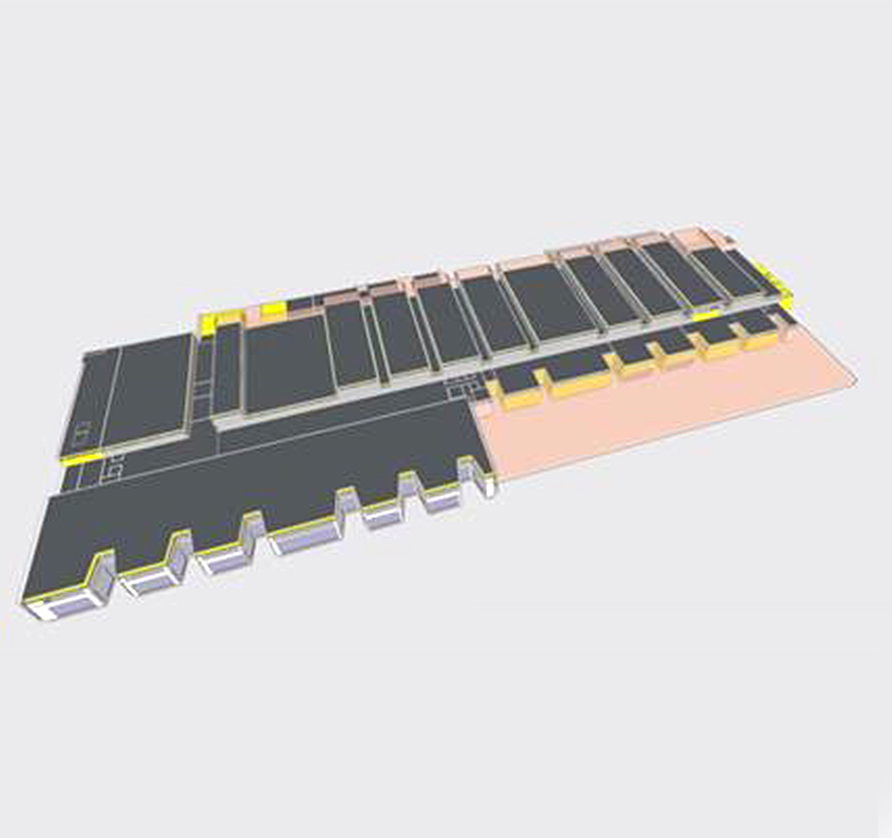
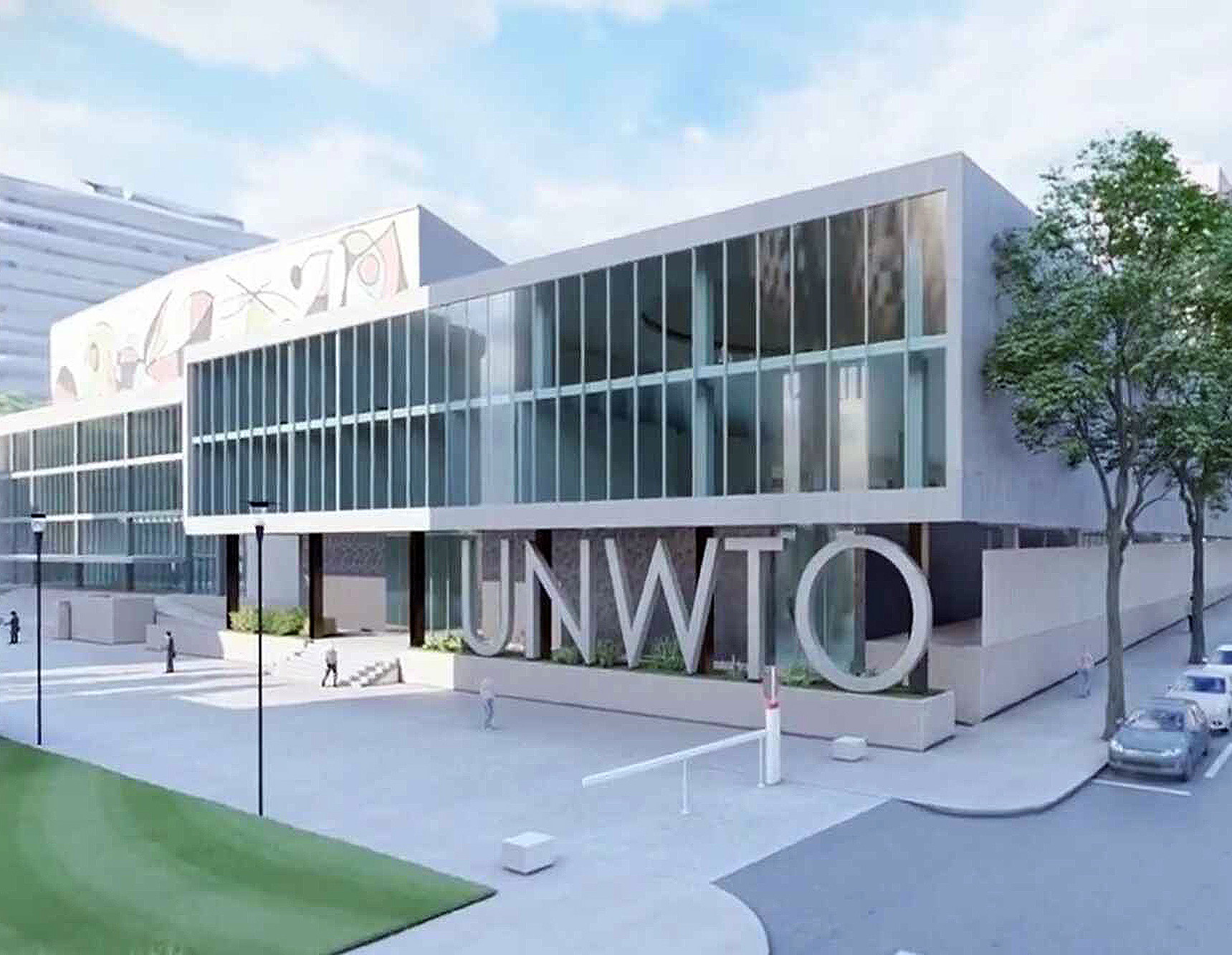
In order to analyse the energy consumption of a building, the CTE defines a set of minimum conditions that affect the thermal envelope, air conditioning installations, lighting systems and the generation of renewable energy for domestic hot water or electricity production. It also includes a final section on the minimum provision for electric vehicle charging infrastructure.
With regard to outdoor lighting, the Regulation establishes the technical conditions for design, execution and maintenance that installations must meet, with the dual aim of improving efficiency and energy savings and reducing light pollution at night.
Work currently underway includes the project for the extension and remodelling of the high-speed tracks and platforms and the passenger building at Chamartín station, and the remodelling of the Atocha complex (current historic building and future new through station), both in Madrid, and the energy certificates for the ACC (Air Traffic Control Centres) of ENAIRE Canarias, Seville, Gavá, Balearic Islands and Torrejón, as well as the new TACC (Terminal Area Control Centre) in Valencia (also designed by Ineco, which also managed the works).
In addition, the company is also working on the remodelling and extension of Building B of the Palacio de Congresos y Exposiciones de Madrid, which will house the future new headquarters of the World Tourism Organisation.
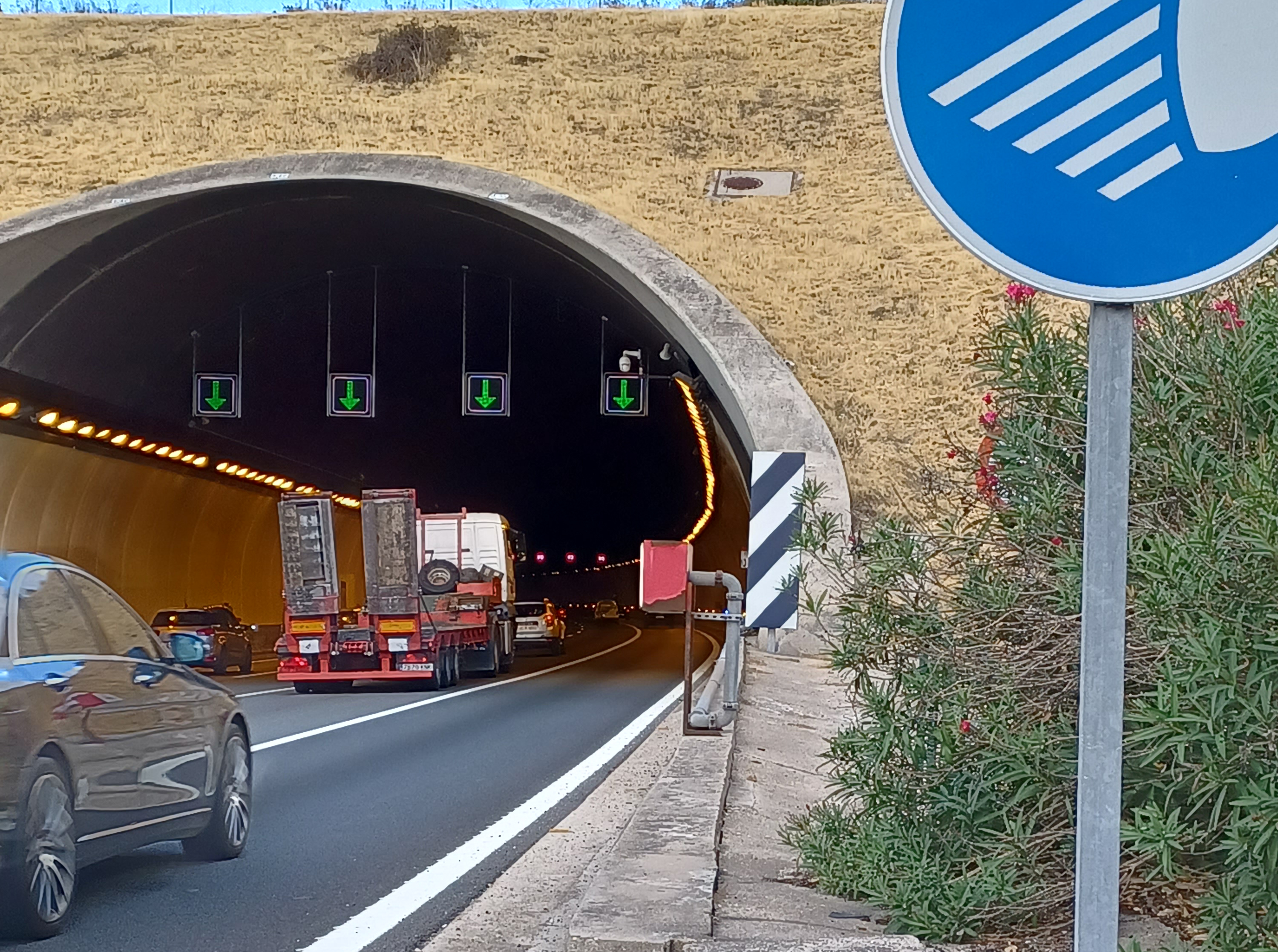
07
Roads: LED at the end of the tunnel
Spain has almost 166,000 km of roads, of which 26,400 km form part of the State Road Network, and on which more than half of the total traffic is concentrated (the rest are the responsibility of the autonomous or provincial governments). According to MITMA data, 75% of annual energy expenditure on the state network corresponds to the lighting and ventilation of its 356 tunnels, totalling 304 km in length. Of these, 310 are managed directly by the General Directorate of Roads.
That is why the Energy Efficiency Strategy for the State Road Network 2022-2028 presented by the government in October 2022 earmarks the bulk of the investment - 330 of a total of 510 million euros - to replacing the current lighting systems (which, except in the most recently built tunnels, have high-pressure sodium vapour projectors) with modern LED systems, which can save between 30 and 40% of energy, as they require less electrical power, and up to 70% with the deployment of intelligent management systems.
Ineco, which has been working with MITMA since 2017 in this field, has drawn up the current Tunnel Lighting Plan, the most ambitious one planned to date, as it not only includes the change of luminaires, but also the implementation of an intelligent digital management system. The advantage is that it is resilient, i.e. it adapts to the lighting needs of each section, and to any situation that may arise; and it is capable of detecting and alerting of power cuts, breakdowns, etc. After analysing the current situation of the tunnels, it is planned to act in 220 of them, of which 140 are located on motorways, 72 on conventional roads and the rest in other locations (junction branches, express roads, urban roads...).
As part of the Plan, Ineco has also carried out a pilot project that includes a feasibility study for the implementation of a photovoltaic solar plant for self-consumption. The first of these studies has been carried out in the Alcantarilla tunnel in Murcia, where administrative procedures have begun for the implementation of a 4 MW solar farm.
The Road Energy Efficiency Strategy, as a whole, aims to reduce road energy consumption by half by 2030, and in addition to the plan to change the lighting of tunnels and open-air sections, it includes other measures, some of which are already being implemented: energy-efficient conservation and operation centers, fleets of vehicles - cars and trucks, machinery, vans, snow ploughs - "zero emissions" or "eco" or rationalisation of contracted electrical power, among others.
